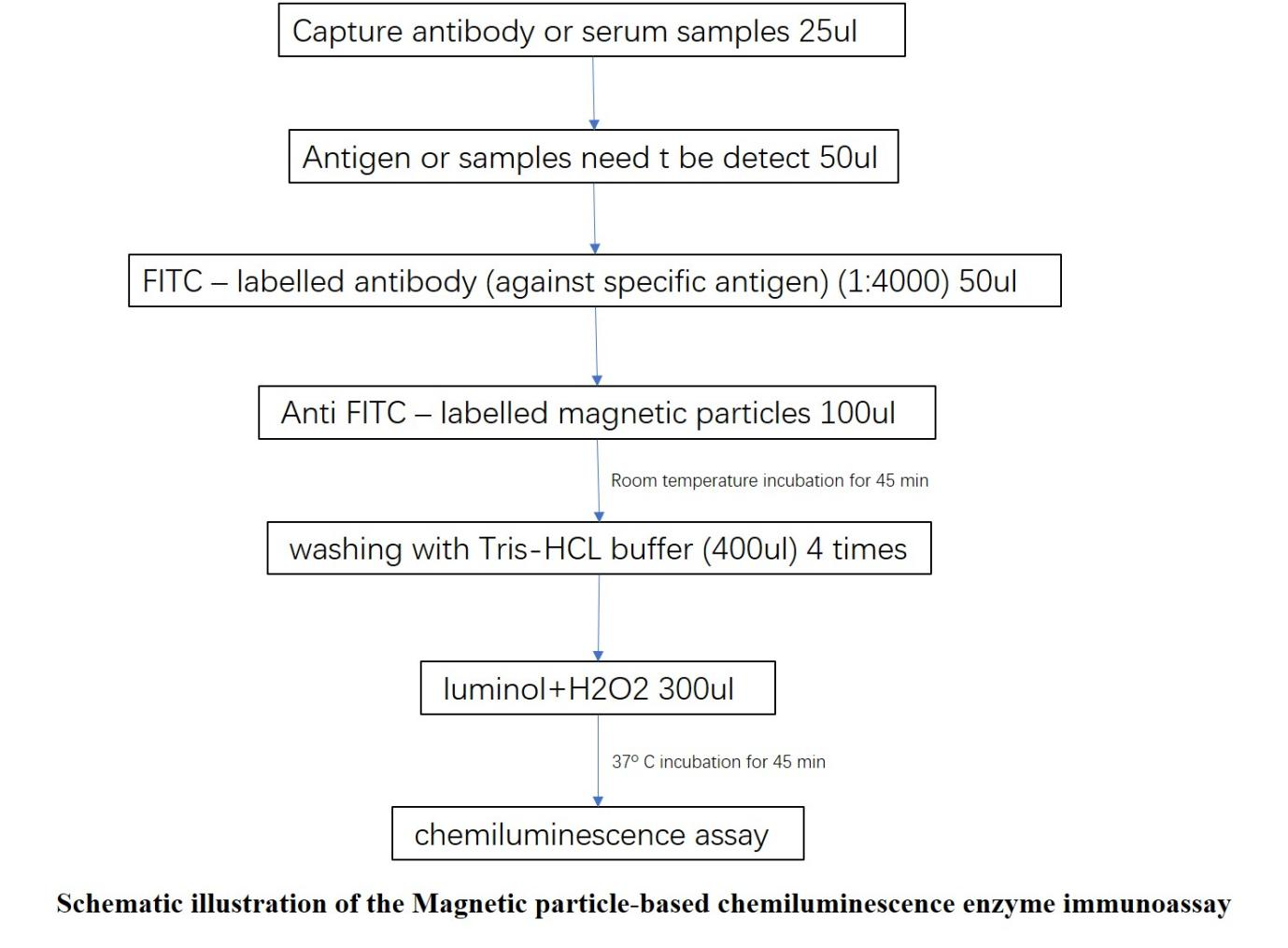What is Magnetic particle-based chemiluminescence enzyme immunoassay
-
1. First, add the capture antibody or serum into the test tubes.
-
2. Add 50 ul of antigen or analyte (dilution ratio of 1:1000).
-
3. After that, add 50 ul of FITC labeled antibody (dilution ratio of 1:4000) and 100 ul of anti-FITC
-
antibody coated MPs. Afterwards, the mixture was incubated at room temperature for 45 min (immunoreaction time).
-
4. Insert the samarium–cobalt magnet under the test tube rack for separation (5 min).
-
5. The antibody coated MPs and any specific captured substances were attracted by the magnets to the bottom of the test tubes, and remove the free substances by gently tapping the test tubes against tissue paper.
-
6. During the washing steps, add 400 ul of washing solution into the test tubes by placing them outside the magnet, so the MPs were resuspended in the washing solution.
-
7. Finally, add 300 ul of CL substrate solution and incubate the mixture for 10 min at 37 ◦C and the emitted photons were measured.







 Guidence of GeneMedi's protocol / procedure for the diagnostics application:
Guidence of GeneMedi's protocol / procedure for the diagnostics application: 